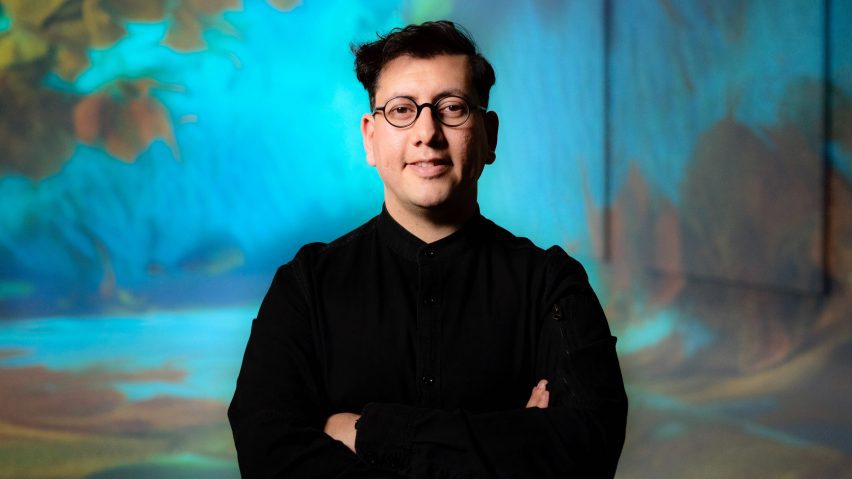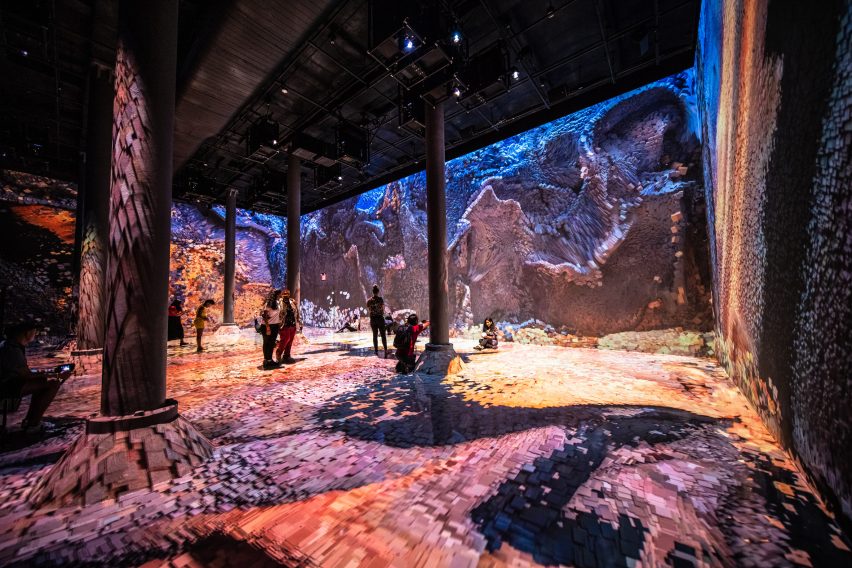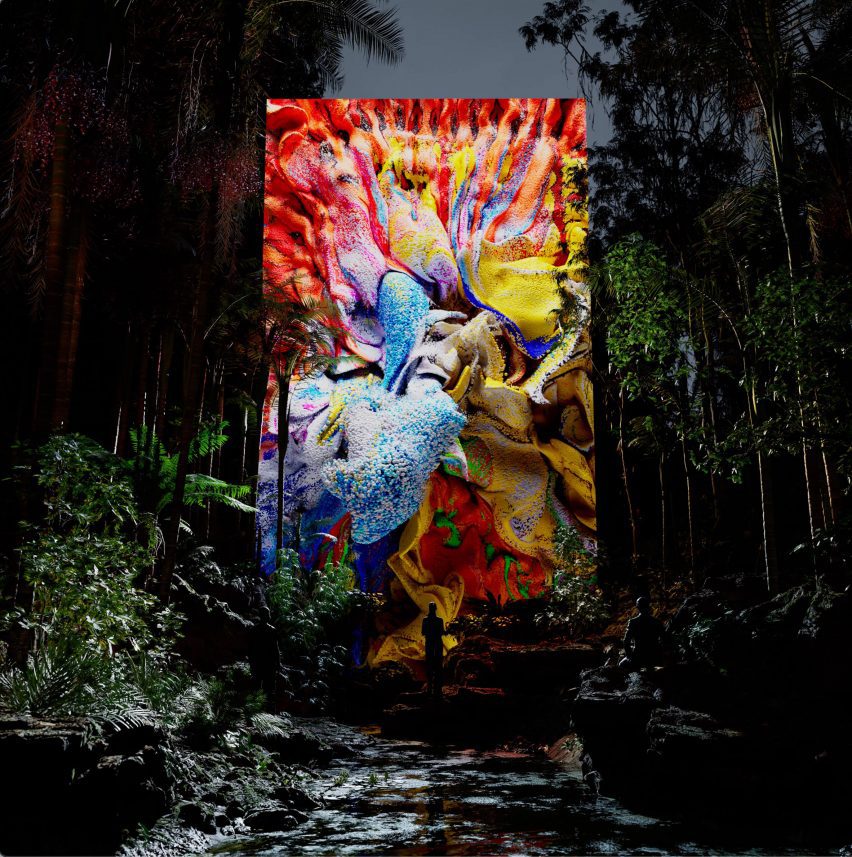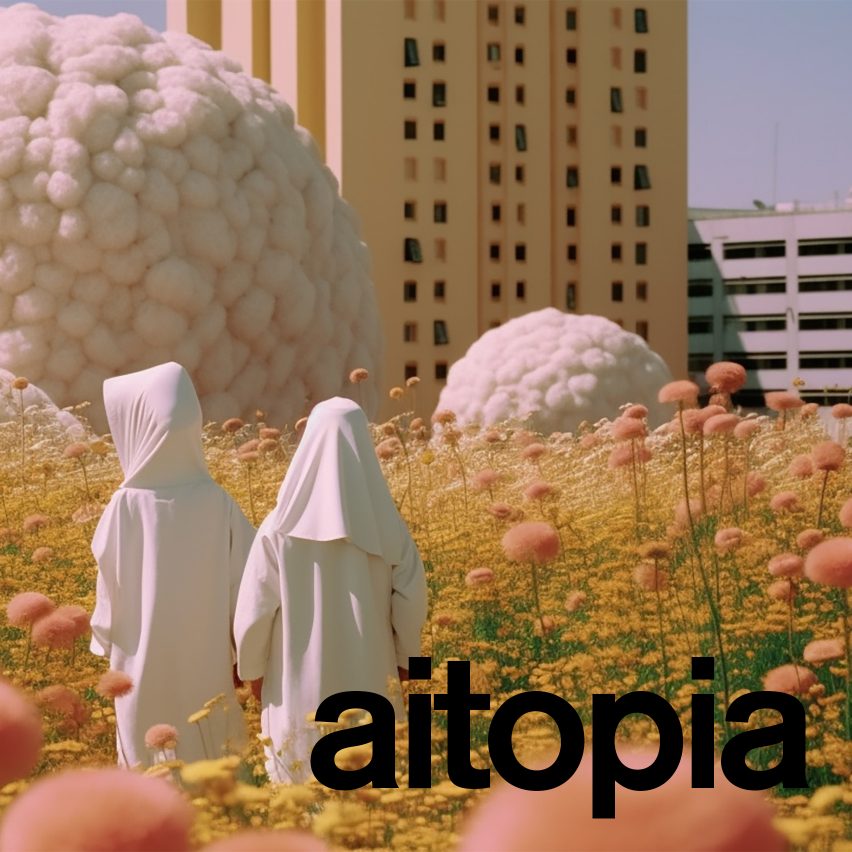
"A deep understanding of humanity is way more complex than any algorithm" says Refik Anadol
For AI to properly emulate human emotions the field must become more inclusive, machine-learning art pioneer Refik Anadol says in this interview.
Known for his dreamlike, large-scale installations, Los Angeles-based Anadol has been creating art with artificial intelligence (AI) since 2016.
While he often uses machine learning to visualise data representing human memories, Anadol explained that AI is still a long way from having emotional capacity comparable to human beings.
"AI is not conscious at all," he told Dezeen, citing this as one of the prevailing contemporary myths about the technology.
"The concept is there, but truly and honestly conscious systems? I don't think we are there at all," added the Turkish-born artist. "It's a possible future, but it's not necessarily where we are yet."

One of the key reasons for this, he said, is that AI does not currently have access to "every single culture in every single language".
According to Anadol, if machine learning were ever to emulate human emotions entirely, it would require this universal experience as a minimum starting point, including "esoteric wisdom".
"I believe we have to bring new perspectives, fresh points of view and diverse minds, and we have to bring as many voices as possible to really be unifying this concept of machine intelligence," said the artist.
"It takes more than bringing brilliant people around a table. AI can generate some intelligence, mimic intelligence, it can do good things, yes, but making something for humanity needs everyone in humanity."
"And that inclusive mindset will take time," he added.
AI can "narrate the invisible world"
Since Dezeen spoke to Anadol, entrepreneur Elon Musk has announced the formation of a startup called xAI that he said will try "to understand reality", staffed by 12 men.
Among Anadol's previous AI-based projects is Machine Hallucination, a 2019 film that consists of millions of photographs of New York City that were sourced using open-source algorithm StyleGAN, which then created more abstract visuals from the data.
Originally presented as an immersive installation at digital art space Artechouse, the film was likened to the reshuffled memories of a human dream by "using AI to narrate the invisible world", Anadol said.
"I'm never inspired by the idea of mimicking reality," reflected the artist. "Like, if AI can do realistic things, it doesn't inspire me to be honest."

Currently, Anadol and his studio are working on Winds of Yawanawa, an NFT collection of 1000 unique "data paintings" that feature similar otherworldly forms to Machine Hallucination.
The collection of digital artwork is made by harnessing weather data from the Yawanawa tribe's village in the Amazon rainforest – including temperature and wind speed, gusts and direction – which is then merged with artwork by young Yawanana artists to form striking visuals.
"I think we will be creating the world's largest AI model," said Anadol. "We are researching with the Yawanawa family as our advisors."
Describing the project as a "humbling" experience, the artist said that using AI to preserve the Yawanawa language is especially crucial because out of around 16,000 native speakers, only 17 people can currently read and write the language.
"Understanding spirituality, understanding our deep emotions and the context of memory in life – I don't believe this is something that can be mimicked with large language models," he said, referring to ChatGPT-type AI systems.
"A deep understanding of humanity is way more complex than any algorithm. I don't believe in reducing this to a bunch of algorithms or papers. I don't believe that will be next year's work for any researchers."
While Anadol acknowledged the risks attached to AI, he argued that the technology is the "only way" to obtain data on such a grand scale, and stressed the overarching goal of connecting people through his work.
He explained that his ultimate ambition is to create what he described as a "library of everything" – a space where people have equal access to "every single data in the world".
"I don't believe in an elitist approach, I don't believe in borders, I don't believe in separations," he said. "I just want to find similarities."
The portrait is by Efsun Erkilic.

AItopia
This article is part of Dezeen's AItopia series, which explores the impact of artificial intelligence (AI) on design, architecture and humanity, both now and in the future.
Dezeen In Depth
If you enjoy reading Dezeen's interviews, opinions and features, subscribe to Dezeen In Depth. Sent on the last Friday of each month, this newsletter provides a single place to read about the design and architecture stories behind the headlines.